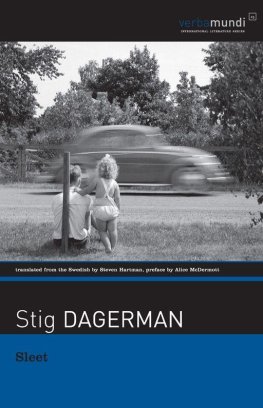Stig H. Moberg - Gunfire!
Here you can read online Stig H. Moberg - Gunfire! full text of the book (entire story) in english for free. Download pdf and epub, get meaning, cover and reviews about this ebook. year: 2017, publisher: Frontline Books, genre: Politics. Description of the work, (preface) as well as reviews are available. Best literature library LitArk.com created for fans of good reading and offers a wide selection of genres:
Romance novel
Science fiction
Adventure
Detective
Science
History
Home and family
Prose
Art
Politics
Computer
Non-fiction
Religion
Business
Children
Humor
Choose a favorite category and find really read worthwhile books. Enjoy immersion in the world of imagination, feel the emotions of the characters or learn something new for yourself, make an fascinating discovery.
- Book:Gunfire!
- Author:
- Publisher:Frontline Books
- Genre:
- Year:2017
- Rating:3 / 5
- Favourites:Add to favourites
- Your mark:
- 60
- 1
- 2
- 3
- 4
- 5
Gunfire!: summary, description and annotation
We offer to read an annotation, description, summary or preface (depends on what the author of the book "Gunfire!" wrote himself). If you haven't found the necessary information about the book — write in the comments, we will try to find it.
Gunfire! — read online for free the complete book (whole text) full work
Below is the text of the book, divided by pages. System saving the place of the last page read, allows you to conveniently read the book "Gunfire!" online for free, without having to search again every time where you left off. Put a bookmark, and you can go to the page where you finished reading at any time.
Font size:
Interval:
Bookmark:

Gunfire!
British Artillery in the Second World War
Stig H. Moberg

Dedicated to the Royal Regiment of Artillery in honour of its 300 years of distinguished service

Gunfire: British Artillery in the Second World War
This edition published in 2017 by Frontline Books,
an imprint of Pen & Sword Books Ltd,
47 Church Street, Barnsley, S. Yorkshire, S70 2AS
Copyright Stig H. Moberg, 2017
The right of Stig H. Moberg to be identified as the author of this work has been asserted by him in accordance with the Copyright, Designs and Patents Act 1988.
ISBN: 978-1-47389-560-7
eISBN: 978-1-47389-562-1
Mobi ISBN: 978-1-47389-561-4
All rights reserved. No part of this publication may be reproduced, stored in or introduced into a retrieval system, or transmitted, in any form, or by any means (electronic, mechanical, photocopying, recording or otherwise) without the prior written permission of the publisher. Any person who does any unauthorized act in relation to this publication may be liable to criminal prosecution and civil claims for damages.
CIP data records for this title are available from the British Library
For more information on our books, please visit
or write to us at the above address.
O, wad some Power the giftie gie us
To see oursels as others see us!
R OBERT B URNS
Having spent my working life either serving in the Royal Regiment of Artillery or as the Curator of its famous historical collections, I was inevitably hooked by the idea of a book on the Regiments role in World War II. It was without doubt a period when British artillery reached a peak of power and performance, prompting encomiums from wartime military leaders of the calibre of FM Montgomery and General Horrocks, both of whom attributed much of the British Armys success to its artillery. Finding that the book was written by a Swedish artillery officer added to my interest.
In addition to a successful career in his field of expertise, with managerial roles in electrical engineering and power supply companies, Stig H. Mobergs experience as a reservist artillery officer in Sweden is extensive. He served from 1957 to the late 1980s, keeping up to date by attending courses and field exercises at many levels. His interest in history and the principles of indirect fire led him to explore the subject, settling on British artillery in the Second World War as the state of the art. His choice was influenced by finding that the archives in England were full of valuable sources, making it much easier to study the subject.
The author has done an immense amount of research in producing this book, which covers a wide range of topics, including a historical background that explains how artillery firepower developed, particularly with the dramatic switch from direct to indirect fire shortly before the First World War. He discusses the many consequent changes in technology, including improvements in range, weight of fire, accuracy, communications, transport and logistics, showing a system at its peak when that war ended. However, the system lay dormant in the period between the wars, and enormous efforts were needed to get the Royal Artillerys performance back to a level where it could begin to help turn the tide against the Axis powers in the Second World War. In this context he highlights the decisive contribution by Brigadiers (later Generals) Sidney Kirkman and Jack Parham. Their initiative led to new tactical and gunnery principles which enabled swift and unmatched massing of artillery.
This book takes the reader through that period of development, showing not only the technical improvements and advances, but also illustrating them with accounts of events and actions during the early days of the War. It goes on to discuss organisations and equipment, both of which are helped by clear illustrations and photographs. A masterly account of the progress of the War shows how artillery made its contribution. A glance at the bibliography and the detailed footnotes show how much work has gone into producing a comprehensive account of his subject. The book is a translation from the original publication in Sweden, but it has been closely reviewed by the author in the process, resulting in a thoroughly readable exploration of the subject. It is of particular interest because it is a study by an officer of a foreign army, who provides an extraordinarily detailed analysis of the role of artillery in the Second World War.
Brigadier Ken Timbers (late RA), September 2016
This book was first published in Sweden in 2013, written for those interested in military history, in particular artillery history. The English version is a slightly revised edition in order to take into account valuable comments and suggestions received from readers and experts in Sweden and U.K. Many photographs have been replaced by substitutes made available from various sources during the process of preparation.
The conceptual idea was to provide insights as to how artillery resources were established, developed technically and tactically and used during the Second World War, with the British Royal Artillery as an example. This is often very sparsely dealt with in the voluminous literature on Second World War battles.
The book is not a scientific treatise, neither regarding theory nor methodology. It is based on observations of particular interest to me, hoping, however, that this will give readers a better understanding of the role of artillery in the Second World War.
The reason for selecting the British artillery as a subject for this book is partly a consequence of different coincidences, but it is also due to contacts with some British war veterans during the early 2000s. I have also been inspired by a statement about the British artillery that Lieutenant General Brian Horrocks often gave in his forewords to various publications, but also expressed in many public contexts. He was, as is familiar to many readers, one of Field Marshal Bernard L. Montgomerys most valued and engaged Corps Commanders during the war. One of his statements reads as follows: Although I am an infantryman, and proud of it, I have many times said that the Royal Regiment of Artillery, in my opinion, did more to win the last war, more than any other Arm of the Service.
After having seen similar statements several times, my interest arose to investigate what really laid behind these positive words about the British artillery effort. In my studies, I first examined the artillery resources built up by the British, what equipment they had, how the resources were organised, what technical, tactical, and combat methods etc. that were applied, all against an historical background. The latter is important to have some knowledge of, thus giving a better understanding of the position of the British Artillery just before and during the Second World War. Great Britain had, as is well known, hundreds of years back in time a vast empire, with India as the largest and richest possession. The Armys main task had historically been geared primarily to defend this empire. For the artillery this meant policing with smaller units, a few guns organised into troops and batteries. It was due to this historical burden, but also because of serious negligence in the interwar period, that Britain was ill prepared in the late 1930s for a modern continental war. It became a rude awakening, and we can see that the necessary renovation, modernisation and adaptation of a new organisational structure and modernised methods and tactics, which started in late 1938, was a process that was to take about five years to complete. This despite the fact that the country and its industry were put on a war footing in 1939 for fastest possible rearmament.
Next pageFont size:
Interval:
Bookmark:
Similar books «Gunfire!»
Look at similar books to Gunfire!. We have selected literature similar in name and meaning in the hope of providing readers with more options to find new, interesting, not yet read works.
Discussion, reviews of the book Gunfire! and just readers' own opinions. Leave your comments, write what you think about the work, its meaning or the main characters. Specify what exactly you liked and what you didn't like, and why you think so.











